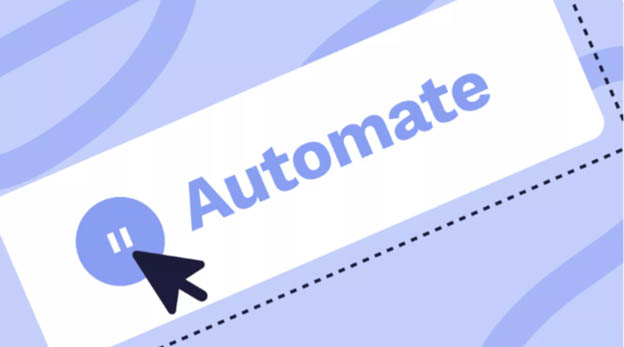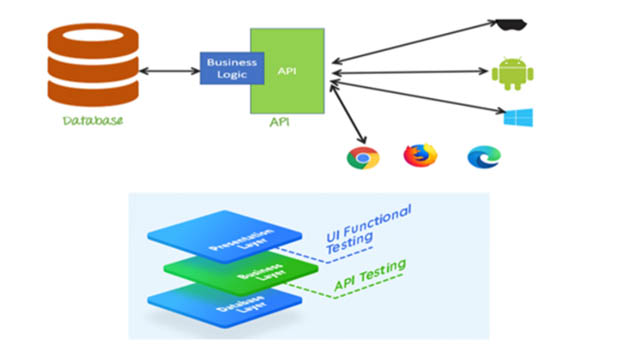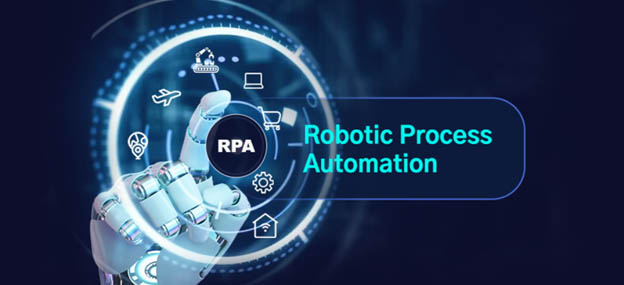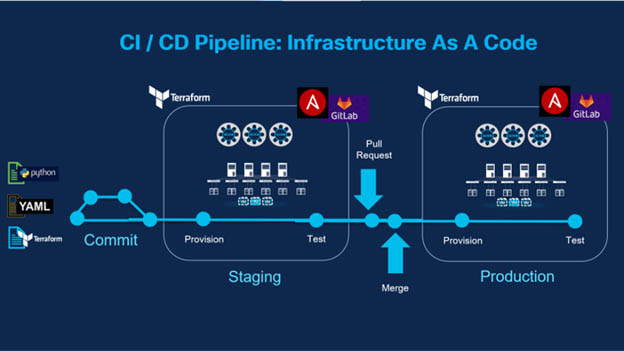In today’s fast-paced corporate world, Dynamics CRM developers must work smarter and more effectively.
Automating monotonous processes enables developers to concentrate on more strategic projects that provide company value.

Image source – https://www.teamwork.com/
Top Automation Tools for CRM Developers
The correct automation technologies may dramatically increase developer productivity and speed up the delivery of CRM solutions.
Test Automation
Setting Up a Test Automation Framework
A robust test automation framework is the foundation for effective test automation. Dynamics CRM developers India should invest time upfront in designing and establishing the framework.
The framework provides the scaffolding to write, execute, and report on automated tests. It should support running tests in parallel to reduce total time.
The framework also needs capabilities to handle test data and integrations with external systems.
Once the framework is in place, developers can progressively build automated test cases on top of it.
Automating Cross-Browser Testing
With users accessing CRM systems from multiple browsers, cross-browser testing is crucial. Automating browser compatibility testing saves significant effort over manual testing.
The Selenium WebDriver allows Dynamics CRM developers to write test scripts that run across different browsers like Chrome, Firefox, Safari, IE, etc. BrowserStack and SauceLabs provide cloud-based platforms to automate cross-browser testing across thousands of browser-OS combinations. These cloud services are fast and scalable.
Automating Load and Performance Testing
Load testing and performance testing are vital for identifying bottlenecks before launch. Load testing tools simulate increasing user load on the system to gauge performance.
Developers can load tests directly from the Visual Studio web test runner. Tools like Apache JMeter allow more complex scenarios like geographically distributed load.
Performance profiling tools like New Relic provide code-level insights to fix performance issues. Automating these validation tests saves days of effort later.
API and Database Automation

Image Source – https://newgensoft.com/
Standardizing API Interactions
CRM systems involve integration with payment gateways, ERPs, shipping providers, etc. via APIs. Developers should standardize and modularize API interactions using Postman collections.
For example, a “New Order” collection can encapsulate API requests for adding orders, sending shipping confirmation, etc.
This avoids custom code duplication. The collections serve as API documentation and can generate client code across languages.
Automating Schema Migrations
Schema changes like adding new columns or tables involve cumbersome manual scripts.
Database migration tools allow Dynamics CRM developers in India to specify code changes that get automatically deployed across environments.
Changes are incrementally added to versions, enabling easy rollback.
Popular migration tools include Flyway (Java), FluentMigrator (.NET), and DBMaestro (database-agnostic). With automation, developers avoid hours wasted in manual schema updates.
Automating Test Data Generation
Meaningful and accurate test data is vital for application testing. However, creating realistic test data manually is difficult.
Developers can leverage test data generation tools like Redgate, and Mockaroo.
These tools can auto-generate thousands of test records conforming to specified domain rules and data constraints. Automated test data accelerates application testing with minimal effort.
Infrastructure Automation
Automating Dev/Test Environment Provisioning
Developers require dedicated dev and test environments to work in isolation without impacting others.
However, manually setting up these environments is time-consuming.
Using infrastructure automation tools like Terraform and Ansible, developers can instantly spin up pre-configured Dynamics CRM environments on demand.
Teardown of unused environments also gets automated to reduce resource wastage. Self-service provisioning of dev/test environments boosts developer productivity.
Automating Deployments and Configuration
Pushing code changes through Dev, QA, and Prod environments involves manual configuration like modifying connection strings.
Automation tools allow Dynamics CRM developers to script deployment pipelines and configuration changes.
A single deployment script can standardize error-prone activities across environments.
Automated configuration management also ensures consistency and accuracy. Developers can deploy rapidly with confidence.
Managing Infrastructure-as-Code
Manually configuring physical or virtual machines leads to configuration drift over time.
Infrastructure-as-code tools like Chef allow Dynamics CRM developers to define the desired infrastructure state in code.
The state is automatically enforced on the actual resources.
Developers treat infrastructure configurations as code artefacts that can be versioned, reviewed, and reproduced. Any drift gets automatically corrected just by running the code.
Robotic Process Automation

Image Source – https://mobisoftinfotech.com/
Automating Data Entry Processes
CRM systems contain forms like lead capture that involve manual data entry. Automating such repetitive processes with RPA bots improves accuracy and reduces cost.
The bot simply mimics user actions in filling forms from a data source. Dynamics CRM developers can build bots with low-code platforms like Microsoft Power Automate development.
Bots never get bored or distracted. Organizations gain higher throughput with lower errors.
Automating Document Processing
Many CRM processes need data extraction from documents like application forms and sales orders.
Dynamics CRM developers can build RPA bots that consume documents from a source folder, extract data using OCR, populate CRM forms, and move documents to the archive.
Bots can work round the clock to complete document processing faster with high accuracy. Employees can utilize their time for judgment-based tasks.
Automating Customer Notification and Follow-ups
CRM systems need to send notifications to customers via email and SMS at predefined process stages.
Remembering to manually trigger notifications can be challenging.
Dynamics CRM developers can automate notifications and reminders by building RPA bots linked to CRM workflows.
The bots get triggered on workflow status changes to consistently send notifications without human intervention. This improves compliance and customer experience.
Overcoming Automation Challenges
While automation delivers tangible benefits, Dynamics CRM developers need to be cognizant of key challenges:
Maintaining Existing Automation
The biggest pitfall is automation decay due to lack of maintenance. As the application evolves, existing automated tests can start failing and scripts may need updating.
Without active maintenance, the automation suite becomes unusable over time.
Developers should budget time to continually update and enhance automation artefacts.
Avoiding Automation Overkill
Automating everything without thought can backfire. Not all processes may be suitable for automation or have sufficient ROI.
Dynamics CRM developers should carefully select scenarios based on cost-benefit analysis rather than blind automation.
Over-automation can sometimes complicate rather than simplify operations.
Managing Increased Technical Debt
While automation pays off, it inevitably increases technical debt over time as scripts and bots accumulate.
The automation suite requires investments to keep it from eventually collapsing under its weight.
Dynamics CRM developers need to periodically refactor scripts, migrate to newer platforms, etc. to keep the debt under control.
Securing from Unexpected Failures
Automation breaks unexpectedly when realities on the ground drift from scripted paths. Failure handling needs special attention.
Developers should invest in proper exception management, alerting, throttling, retries, rollbacks, etc. to make automation robust and resilient.
Integrating Automation Tools
Combining Test Automation with CI/CD Pipelines
Test automation generates the most value when integrated into CI/CD pipelines.
Dynamics CRM developers should trigger automated test suites on code commits and deployments.
Unit testing should be embedded into the developer workflow. Integration and browser testing must run on code merges to catch issues early.
Regression testing needs to be executed on staging environments before releases.
Test failures should automatically roll back deployments. This bakes quality checks into the development lifecycle.
Orchestrating API Testing Scenarios
While Postman provides the capability to build modular collections of API calls, these need orchestration.
Developers can use Newman, Postman’s CLI, to run predefined collections in a specific sequence.
For example, a new customer onboarding scenario may execute collections for sign-up, profile creation, subscription purchase, payment processing, etc. Chained API testing Services accelerate end-to-end validation.
Integrating Database Migrations with Deployments
Database changes coded via schema migration tools need integration into deployments.
Dynamics CRM developers can configure build pipelines to execute migration scripts as part of releases.
This automatically propagates schema changes to higher environments.
Integration provides standardization, and auditability and prevents risky manual database alterations. Developers avoid stepping on each other’s toes.
Combining Infrastructure-as-Code with CI/CD

Image Source – https://cisco.com/
Infrastructure-as-Code proves more powerful when made part of continuous delivery pipelines.
Developers can trigger Terraform or Ansible scripts from CI/CD tools to spin up environments on-demand for testing or deployment.
Destroying unused resources gets incorporated into pipeline stages as well. Infrastructure changes proceed in lockstep with application changes.
Embedding RPA into Business Processes
For optimal benefits, RPA bots need tight integration into business processes and workflows. Developers can connect bots to workflow triggers like email receipts or database updates.
This automatically invokes bot execution as part of business processes.
CRM systems can dynamically orchestrate bot activities instead of standalone scheduled jobs. RPA gets woven into process fabric.
Adopting Low-Code Automation
Empowering Citizen Developers for Automation
Low-code application development platforms like Power Apps and MS Flow enable power users and business analysts to build automation.
Developers should empower citizen developers with the right guidance and governance. This multiplier effect shares the automation workload with the business.
Applying Low-Code Where Feasible
While low code speeds up simple automation, complex scenarios require traditional coding.
Developers should strategically apply low code for the 20% repetitive tasks.
This frees up technical resources for 80% of sophisticated challenges requiring custom programming. Find the right low-code vs pro-code balance.
Using Low-Code to Prototype Automation
Low code allows rapid prototyping to experiment with automation approaches before actual implementation.
Developers can quickly build PoCs to demonstrate automation feasibility for business buy-in.
Successful prototypes can be turned into production-grade solutions later. Low code is a handy tool for innovation and design thinking.
Simplifying RPA Bot Development
Full-scale RPA tools have complexity and learning curves. Low-code RPA solutions like Microsoft Power Automate simplify bot development for common use cases.
Dynamics CRM developers with limited RPA expertise can leverage the easy drag-and-drop interfaces of Power Automate to automate CRM workflows.
This brings RPA within reach for everyday scenarios.
Optimizing Automation ROI
Prioritizing High Transaction Volume Tasks
The ROI for automating any task depends on its execution frequency. Dynamics CRM developers should target automating high transaction volume repetitive tasks first.
For example, automating new lead data entry provides much higher ROI than new product onboarding. Optimize for automation that maximizes productivity gains.
Focusing on Error-Prone Manual Steps
Any process steps prone to human errors are prime automation candidates. Data entry, calculations, deployments, etc., are error-prone if done manually.
Developers should identify points of failure to focus automation efforts there. This improves quality and reduces costly mistakes.
Eliminating Tedious Tasks for Developers
Any repetitive tasks that frustrate developers and drain productivity make good automation targets.
Dynamics CRM developers should look to eliminate mundane chores that demotivate them through smart automation. This boosts job satisfaction along with efficiency.
Assessing Cost-Benefit Ratios
Building automation has upfront costs that should pay off over time. Developers need to carefully evaluate cost-benefit ratios before embarking on automation.
Scenarios with low cost-benefit may not be viable automation candidates or require simpler low-code solutions.
Tracking Automation Usage and Productivity
To continually optimize, automation usage needs tracking. Metrics like test cases automated, environments spun up, APIs automated, etc. should be measured.
Productivity gains from eliminating repetitive tasks must be quantified. Developers can then prioritize automating remaining high-ROI efforts.
Scaling Automation with Growth
Modular and Scalable Framework
As CRM systems scale, automation suites also need to keep pace. Developers should architect automation frameworks to be easily extensible.
New test cases, API collections, bot flows, etc. can be added as modular components. A scalable automation platform can smoothly expand over time.
Automating Recovery from Failures
Automation fault tolerance is critical for scale. Test flakiness that causes false failures should be automatically retried.
Developers need to programmatically build resilience capabilities like failure alerts, throttling, staggered retries, fallbacks, etc. Automation should degrade gracefully and not crash entirely.
Monitoring Automation Health
At size, automation systems need careful monitoring. Metrics for usage, performance, failures, etc. must be tracked.
Developers should get alerts for anomalies and be able to diagnose issues proactively. Investing in automation instrumentation pays off when operating at scale.
The future of CRM development will involve smart integrations between professional developers, low-code platforms, test automation, infrastructure-as-code, RPA, and more. Developers who embrace automation can look forward to delivering greater business value with reduced efforts.
So get automating – the benefits are too huge to ignore!
What automation tools have helped boost your productivity as a Dynamics CRM developer? Share your experiences in the comments below.





